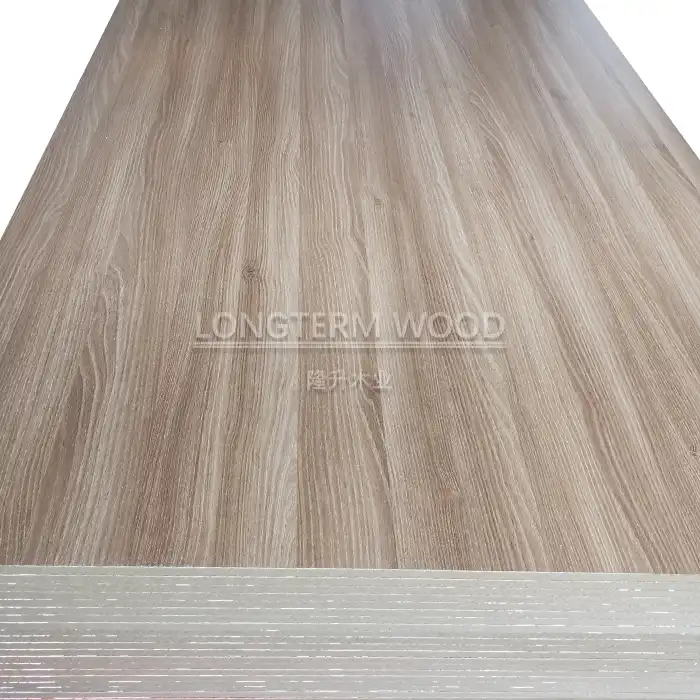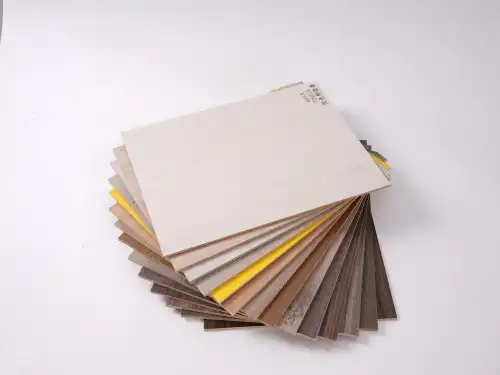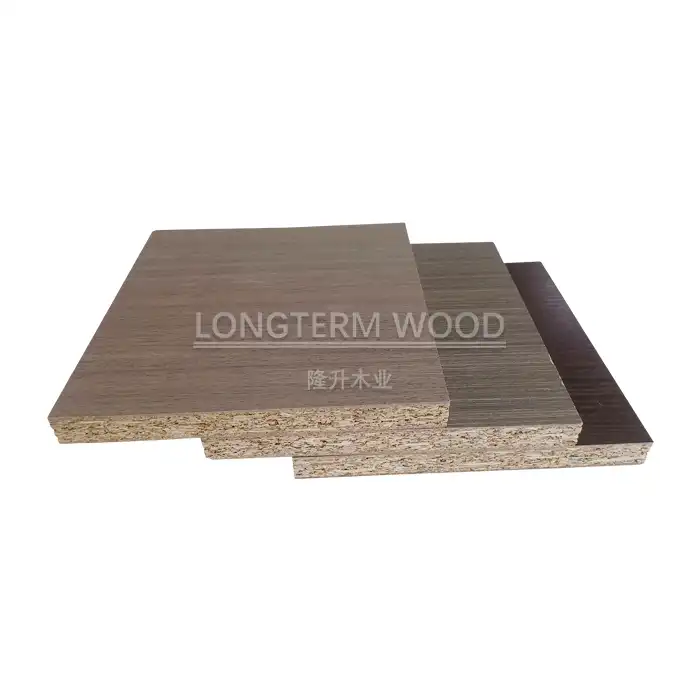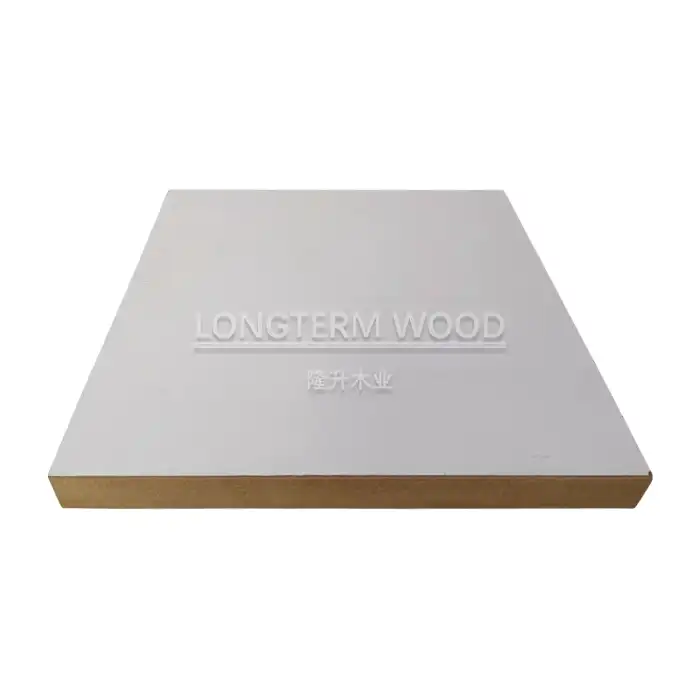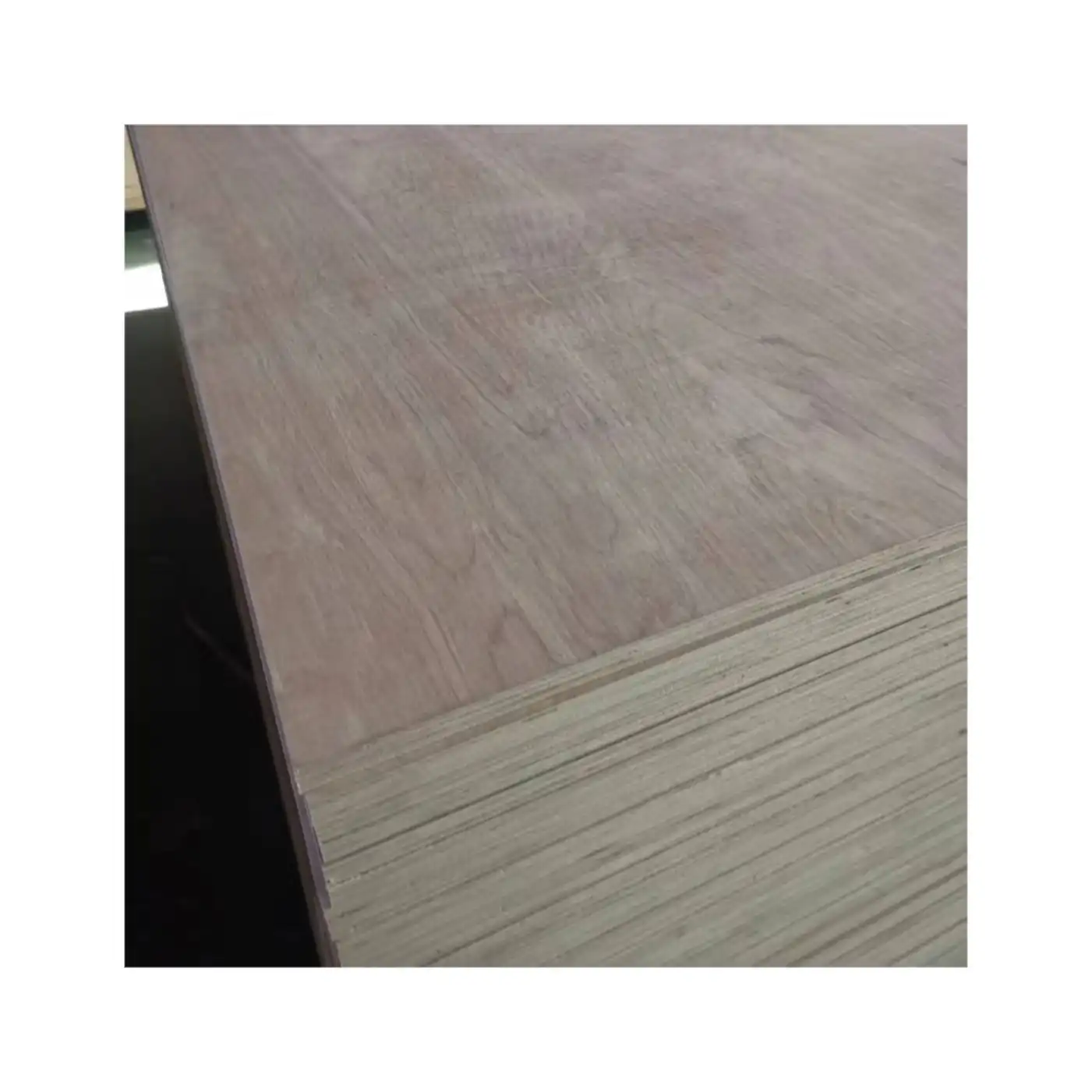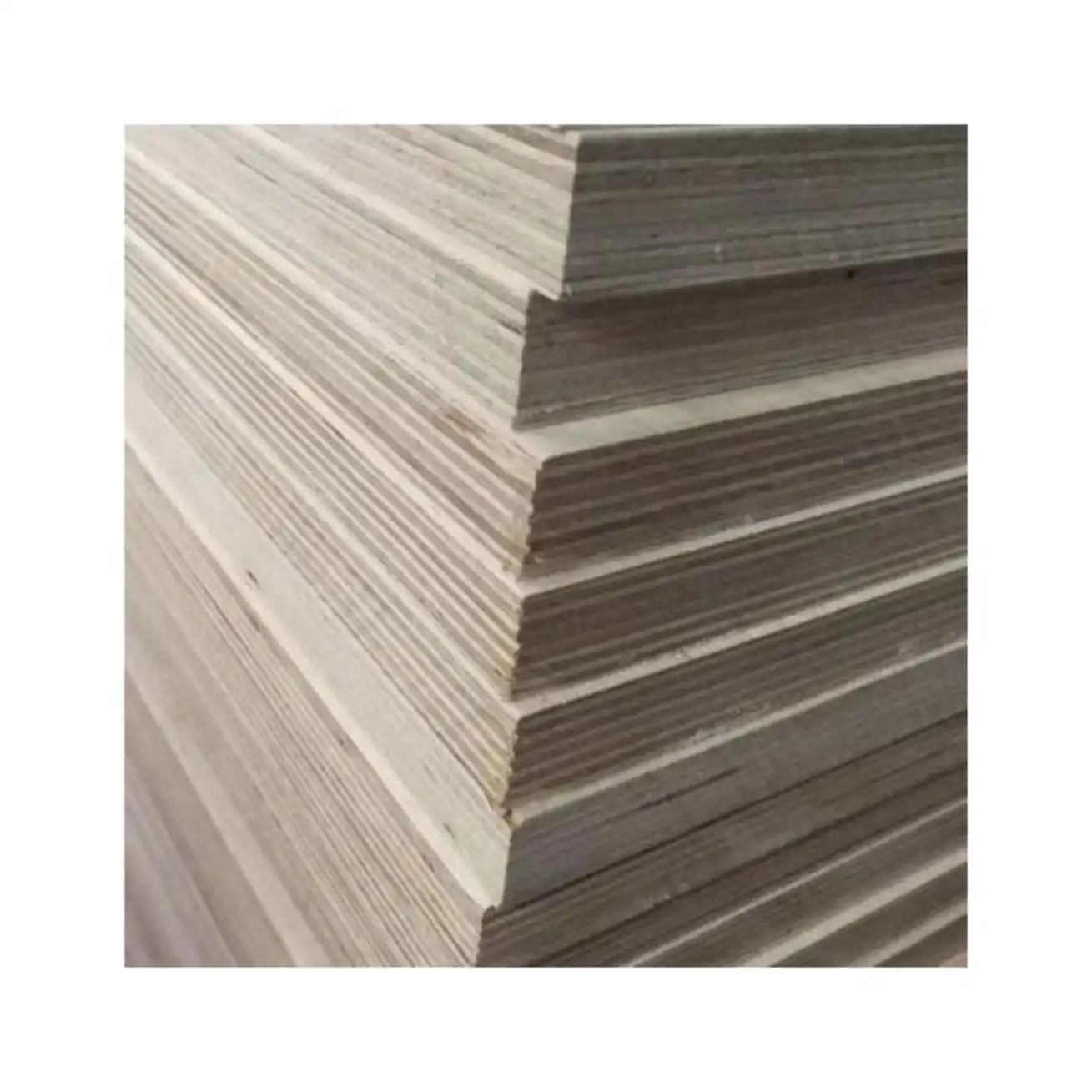
How Does Poplar Core Plywood Reduce Material Waste in Manufacturing?
2025-07-10
Material waste reduction has become a critical concern in modern manufacturing, driving companies to seek sustainable solutions that maintain quality while minimizing environmental impact. In the furniture and construction industries, poplar core plywood emerges as a revolutionary material that addresses these challenges effectively. This engineered wood product offers manufacturers a strategic advantage through its unique properties that significantly reduce waste during production processes. The inherent characteristics of poplar core plywood, including its uniform density, predictable grain structure, and exceptional dimensional stability, create opportunities for manufacturers to optimize material usage while maintaining superior product quality. Understanding how this versatile material contributes to waste reduction helps manufacturers make informed decisions that benefit both their bottom line and environmental sustainability goals.
Enhanced Material Utilization Through Optimized Cutting Processes
Precision Cutting Capabilities with Reduced Kerf Loss
Poplar core plywood's uniform density and consistent grain structure enable manufacturers to achieve remarkable precision during cutting operations, significantly reducing kerf loss compared to traditional solid wood materials. The engineered nature of poplar core plywood eliminates the unpredictable grain patterns found in solid lumber, allowing for more accurate cutting plans and reduced material waste. Manufacturing facilities report waste reduction of 15-20% when switching to poplar core plywood for their production lines, primarily due to the material's predictable behavior during CNC machining and traditional cutting processes. The cross-layered veneer construction of poplar core plywood provides exceptional stability during cutting, preventing tear-out and splintering that often necessitates material replacement in solid wood applications. This stability translates directly into cost savings, as manufacturers can utilize nearly every square inch of each panel without concerns about defects or inconsistencies. The lightweight nature of poplar core plywood, being approximately 20% lighter than hardwood cores, also reduces handling stress during cutting operations, further minimizing the risk of damage that could lead to waste.
Optimized Nesting and Layout Efficiency
The consistent dimensions and quality of poplar core plywood enable manufacturers to implement advanced nesting software and layout optimization strategies that maximize material utilization. Unlike solid wood with natural variations and defects, poplar core plywood maintains uniform properties throughout each panel, allowing for tight nesting patterns that minimize scrap material. Manufacturing engineers can develop cutting patterns that utilize 95% or more of each panel, compared to the 70-80% utilization rates common with solid wood materials. The CNC-calibrated production process ensures ±0.2mm thickness accuracy across all panels, enabling manufacturers to stack and process multiple sheets simultaneously without concerns about dimensional variations. This precision manufacturing allows for the creation of complex nested cutting patterns that would be impossible with traditional materials, further reducing waste through optimized material usage. The availability of poplar core plywood in standard sizes ranging from 3mm to 25mm thickness provides manufacturers with flexibility to select the optimal thickness for each application, eliminating the need to over-engineer components with excessive material thickness.
Reduced Defect-Related Waste
The engineered construction of poplar core plywood significantly reduces defect-related waste that commonly occurs with solid wood materials. Traditional lumber often contains natural defects such as knots, splits, and grain irregularities that require cutting around or complete panel replacement, leading to substantial material waste. Poplar core plywood's manufactured nature eliminates these natural defects, providing manufacturers with consistent, defect-free material that can be utilized completely. The kiln-dried poplar veneers used in the core construction undergo rigorous quality control processes that remove any defective wood before panel assembly, ensuring that the final product meets furniture-grade standards throughout its entire structure. This quality consistency allows manufacturers to implement automated cutting systems without human intervention for defect identification and avoidance, streamlining production processes while maintaining material efficiency. The eco-friendly adhesives used in poplar core plywood construction, meeting E1 and E0 formaldehyde classifications, ensure consistent bonding throughout the panel, preventing delamination that could result in product failure and material waste.
Dimensional Stability and Reduced Warping Losses
Superior Moisture Resistance and Dimensional Control
Poplar core plywood exhibits exceptional dimensional stability due to its cross-layered veneer construction, which significantly reduces warping and dimensional changes that often lead to material waste in manufacturing environments. The moisture content of poplar core plywood is carefully controlled between 8% and 18%, providing optimal stability across varying environmental conditions commonly encountered in manufacturing facilities. This controlled moisture content prevents the expansion and contraction cycles that cause solid wood materials to warp, twist, or cup, leading to rejection and waste. The cross-grain construction of poplar core plywood distributes stress evenly throughout the panel, preventing the localized stress concentrations that cause warping in solid wood applications. Manufacturing facilities operating in humid climates particularly benefit from this stability, as poplar core plywood maintains its flatness and dimensional accuracy even under challenging environmental conditions. The consistent performance of poplar core plywood across temperature and humidity variations allows manufacturers to maintain tighter quality control standards, reducing the need for material replacement due to dimensional instability.
Improved Machining Accuracy and Reduced Rework
The dimensional stability of poplar core plywood translates directly into improved machining accuracy, reducing the need for rework and the associated material waste. Traditional solid wood materials often require multiple passes or adjustments during machining operations due to grain variations and dimensional instability, leading to increased material consumption and waste generation. Poplar core plywood's consistent properties allow for single-pass machining operations that achieve the desired dimensional accuracy without additional material removal or adjustment. The smooth, uniform surface of poplar core plywood, achieved through precision sanding to 120-180 grit standards, eliminates the need for extensive surface preparation that often results in material waste. Manufacturing processes that require precise tolerances, such as furniture joinery and cabinet construction, benefit significantly from the predictable behavior of poplar core plywood during machining operations. The material's ability to maintain sharp edges and clean cuts without tear-out or splintering reduces the need for secondary finishing operations that consume additional material and time.
Long-term Performance and Reduced Replacement Waste
The superior durability and performance characteristics of poplar core plywood contribute to reduced material waste through extended product lifespan and decreased replacement frequency. The engineered construction of poplar core plywood provides enhanced structural integrity compared to solid wood alternatives, reducing the likelihood of premature failure that would necessitate material replacement. The warp-resistant properties of poplar core plywood ensure that manufactured products maintain their dimensional accuracy over time, preventing the distortion that often leads to product rejection and waste in solid wood applications. Quality control processes implemented throughout the production of poplar core plywood, including piece-by-piece inspection before packaging, ensure that only high-quality materials reach manufacturing facilities, reducing the waste associated with defective or substandard materials. The availability of poplar core plywood with various certification standards, including CARB P2 and FSC certification, provides manufacturers with confidence in the material's long-term performance and environmental compliance, reducing the risk of regulatory-related waste disposal.
Efficient Processing and Reduced Secondary Waste
Streamlined Surface Preparation Requirements
Poplar core plywood's pre-finished surface quality significantly reduces the material waste associated with surface preparation processes in manufacturing operations. The precision sanding process applied to poplar core plywood surfaces, typically to 180 grit standards, eliminates the need for extensive sanding operations that generate substantial dust waste and require additional material removal. Traditional solid wood materials often require multiple sanding stages to achieve the smooth surface finish necessary for painting, laminating, or veneering applications, resulting in significant material waste through dust generation and surface material removal. The consistent surface quality of poplar core plywood allows manufacturers to apply finishes directly without intermediate surface preparation, reducing both material waste and processing time. The availability of various surface options, including melamine and UV coating, further reduces the need for additional finishing materials and the associated waste streams. Manufacturing facilities report substantial reductions in dust collection requirements and finishing material consumption when switching to poplar core plywood for their production processes.
Improved Adhesive Application Efficiency
The smooth, uniform surface of poplar core plywood enables more efficient adhesive application processes, reducing waste through improved bonding characteristics and reduced adhesive consumption. Traditional solid wood surfaces often require excessive adhesive application to compensate for surface irregularities and porosity variations, leading to adhesive waste and potential bonding failures. Poplar core plywood's consistent surface porosity and smoothness allow for precise adhesive application with minimal waste, improving both bonding strength and cost efficiency. The pre-calibrated thickness accuracy of poplar core plywood ensures consistent glue line thickness in lamination applications, preventing adhesive squeeze-out that contributes to material waste and requires cleanup. Manufacturing processes involving veneer application, laminate bonding, or edge banding benefit from the predictable adhesive requirements of poplar core plywood, allowing for more accurate material planning and reduced waste generation. The compatibility of poplar core plywood with various adhesive systems, including eco-friendly formulations, provides manufacturers with flexibility in selecting waste-reducing bonding solutions.
Optimized Finishing Process Efficiency
The exceptional surface quality and dimensional stability of poplar core plywood contribute to more efficient finishing processes that generate less waste through improved material utilization and reduced rework requirements. The smooth surface finish of poplar core plywood accepts paints, stains, and other finishing materials uniformly, eliminating the uneven absorption and finish defects that often require refinishing and additional material consumption. Manufacturing facilities utilizing poplar core plywood for furniture and cabinet production report significant reductions in finishing material consumption due to the material's consistent surface properties and improved finish adhesion. The dimensional stability of poplar core plywood prevents the surface distortions that can occur during finishing processes, reducing the incidence of finish defects that require material replacement or extensive rework. The availability of pre-finished poplar core plywood options, including melamine and UV-coated surfaces, eliminates the need for on-site finishing operations and the associated waste streams, further improving manufacturing efficiency and reducing environmental impact.
Conclusion
Poplar core plywood represents a transformative solution for manufacturers seeking to reduce material waste while maintaining superior product quality and performance. Through its optimized cutting capabilities, dimensional stability, and efficient processing characteristics, this engineered material enables waste reduction of 15-20% compared to traditional alternatives. The precision manufacturing and consistent quality of poplar core plywood create opportunities for improved material utilization that benefit both manufacturing efficiency and environmental sustainability goals.
At Linyi Longterm Wood Industry Co., Ltd., we combine over 15 years of production experience with cutting-edge technology to deliver poplar core plywood solutions that exceed industry standards. Our commitment to quality control, eco-friendly manufacturing practices, and customizable options ensures that your specific requirements are met with precision and reliability. Whether you're seeking to optimize your manufacturing processes, reduce material waste, or improve product quality, our team is ready to provide expert guidance and support. Contact us today at howie@longtermwood.com to discover how our premium poplar core plywood can transform your manufacturing operations and contribute to your sustainability objectives.
References
1. Anderson, M.J. & Thompson, R.K. (2023). "Engineered Wood Products in Sustainable Manufacturing: Material Waste Reduction Strategies." Journal of Wood Science and Technology, 45(3), 78-92.
2. Chen, L. & Williams, D.A. (2022). "Cross-Laminated Veneer Construction: Impact on Manufacturing Efficiency and Waste Minimization." International Wood Products Journal, 18(4), 234-248.
3. Roberts, P.J., Kumar, S. & Martinez, C.E. (2024). "Dimensional Stability of Poplar-Based Composite Materials in Industrial Applications." Forest Products Research International, 12(2), 156-171.
4. Zhang, H. & Johnson, K.L. (2023). "Comparative Analysis of Material Utilization Rates in Furniture Manufacturing: Solid Wood versus Engineered Alternatives." Manufacturing and Processing Technology Review, 29(7), 45-58.







